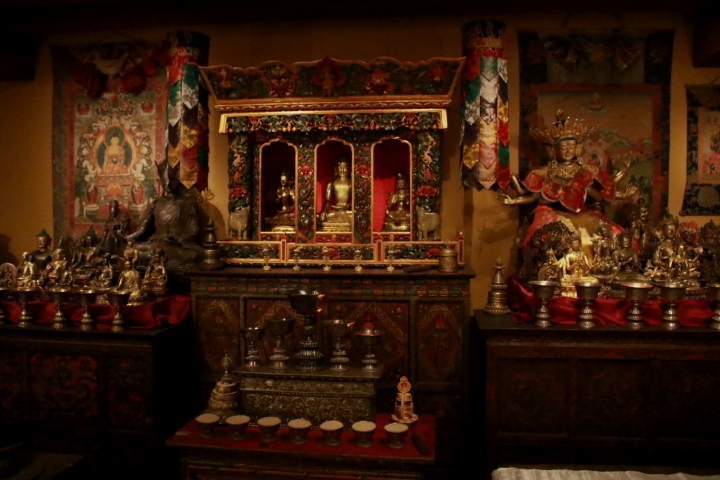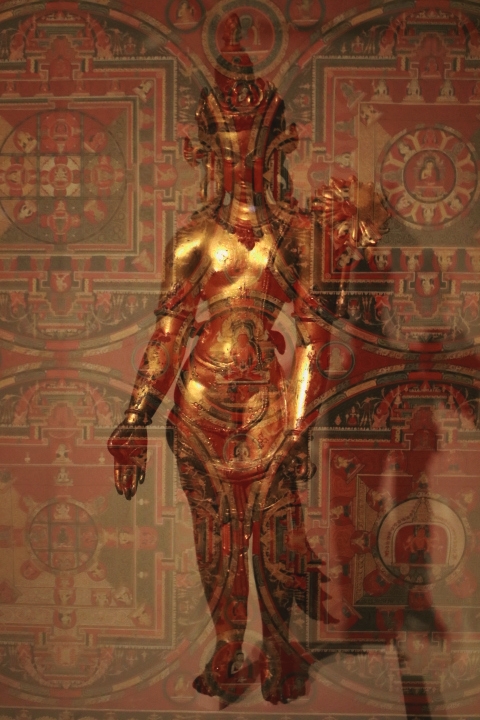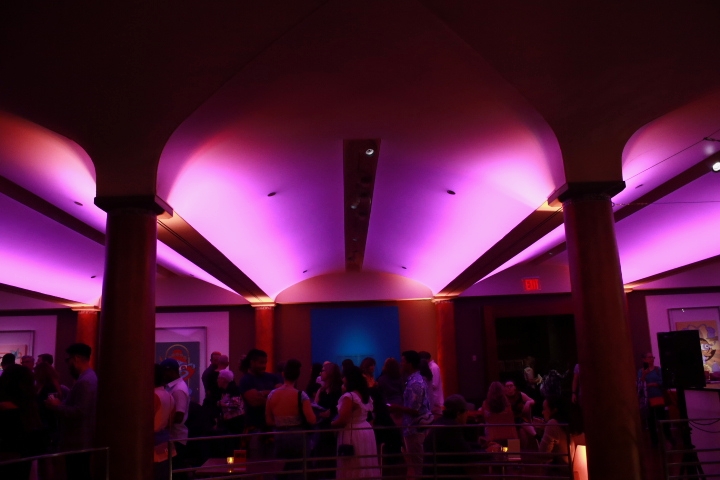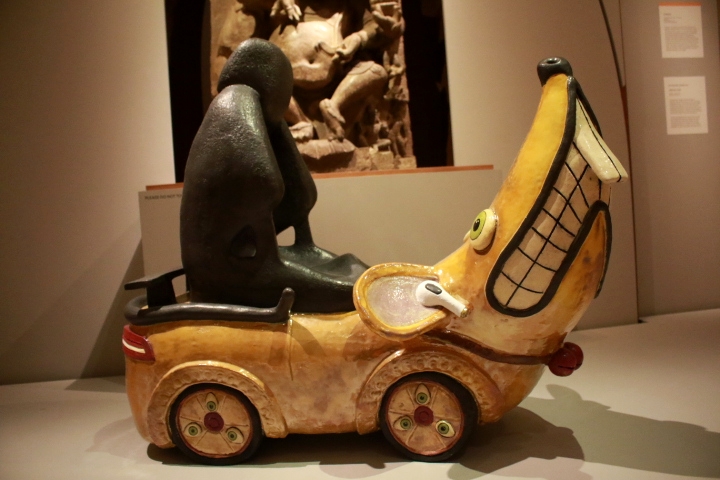
Letting Go of the Rubin.
The Rubin Museum was a cherished NYC institution that presented the vibrant art of the Hamalayas. Sadly this beloved establishment closed its doors forever October 6. A real life lesson of the Buddhist concept of impermanence; fans will have to let go of the Rubin Museum.
Where the Rubin began.
Shelley and Donald Rubin were building their collection of Himalayan iconography since 1974. The building was previously a Barney’s New York store. It underwent a major renovation, though the striking spiral staircase and many architectural features were retained. The Rubin Museum opened its doors October 2, 2004, showcasing treasures from all over Hindu and Buddhist lands: Kashmir, India, Tibet, Nepal, China, Bhutan, Mongolia, and more. Some pieces are nearly 1000 years old. Much of the art on display was ancient, but many contemporary artists were featured as well.
The Rubin Museum gave an in-depth look at the symbolism and history of the pieces that hanged among its seven floors. The goal was to impart the wisdom and beliefs of Hinduism and Buddhism. It wasn’t just a history lesson however and featured hands-on, interactive exhibits that explore emotions, among many more things.

Each floor spiraled you deeper into dharma.
Hinduism and Buddhism are belief systems that developed in the Himalayan region, which encompasses modern day North India, Nepal, and Tibet. Hinduism and Buddhism are concerned with a term called dharma. In Hinduism dharma is deemed as the cosmic truth underpinning righteous behavior and social order. In Buddhism, dharma is a universal truth as taught by the Buddha. Both believe that the highest aspiration is to escape the eternal cycle of life, death, and rebirth. This is called Samsara in Hinduism and Nirvana in Buddhism. Though both systems emphasize the liberation of the soul, they differ on how one accomplishes this.
In Hinduism it’s believed that you gain favor by gaining good karma, which influences the quality of your next life. In each life you progress spiritually, collecting more karma, which eventually brings you to Samsara. It could take thousands of lifetimes before someone reaches Samsara. Buddhism views Nirvana in more cerebral terms though. It proposes that by mastering your mind you can escape the suffering of reality, which allows your eventual liberation.
The meaning behind the Himalayan art.
The first floor delved into the symbolism and artistry of the art so that you had a deeper understanding of it. There are symbols that appear frequently, which remind Hindus and Buddhists to aspire for virtuous behavior. A symbol seen frequently in Hindu and Buddhist art are mudras. Mudras are hand gestures with specific meaning. The most common one is the abhaya mudra, which symbolizes peace and friendship.
The second floor, Mandala Lab, was an immersive rooted in Buddhist beliefs. The last exhibit invited visitors to participate in a playful experiment. They were instructed to strike gongs attached to levers, which hanged over a glass tank of water. After striking the gongs, you would then submerge them into the water. When the gongs were outside of the water they resonated loudly, but when submerged the sound became warped and muted. Visitors were then told to reflect on how anger is similar to this experiment. It demonstrated that when the mind is undisciplined anger resonates loudly.
The following floors featured more Himalayan art, visual media, and meditation spaces. One space museum-goers will sorely miss was the Tibetan shrine. It was built to be an authentic representation of a Tibetan shrine. It is dark and serene with tea lights illuminating brightly colored flags and orate furniture. On a quiet day, visitors could sit and listen to a playlist of different Buddhist tracks; Mongolian throat singing, Sanskrit, or Nepalese chants.

Letting go of the Rubin Museum.
For just over twenty years the Rubin Museum exposed so many to the wonder and beauty of Himalayan art. Additionally, the Rubin showed us the merits of Dharmic philosophy and helped us cultivate our minds. The Rubin Museum closing is going to be a massive change for NYC’s cultural sector.. Museums provide an invaluable service to the public. Museums like the Rubin are a connection to the past and help us interpret and understand it. As time goes on more and more museums are finding it difficult to fight the tide of digitization.
The Rubin closing is losing yet another piece of their youth for many. It was a place we went to discover who we are and what we believe. But it was also a place to have fun. The ground floor was a wide open space that hosted so many joyous Friday night soirees and had one of the best museum gift shops. The curry soup was delicious.
A key concept in Buddhism is impermanence, which means that nothing is permanent and everything is constantly changing. Buddhism teaches that detachment is important because if one is overcome by their emotions they don’t see reality clearly. Emotions are also thought of as being a large source of suffering. Hopefully Rubin visitors integrated these Buddhist teachings to handle this massive loss.

What is Next for the Rubin?
Though we are heartbroken here at Brooklynites, this isn’t the end. The Rubin will transition into a global museum model with “the goal of bringing greater awareness and understanding of Himalayan art to more people around the world.” The Rubin will participate in collection loans to museums across the world and will maintain a virtual gallery of their collection.
As always I, and the team at Brooklynites, thank you for reading. Click back soon. <3

Read about the Rubin’s future as a global museum:
https://rubinmuseum.org/transformation/
Learn more about Dharma:
https://en.wikipedia.org/wiki/Dharma
Learn more about mudras:
https://www.khanacademy.org/humanities/art-asia/south-asia/south-asia-intro/a/mudras-in-buddhist-art
Read Brooklynite’s article on the Buddhist temple of Vinegar Hill:
https://brooklynites.nyc/find-inner-peace-in-vinegar-hill/
Read Brooklynite’s article about the serene Cherry Blossoms of the Brooklyn Botanical Garden:

